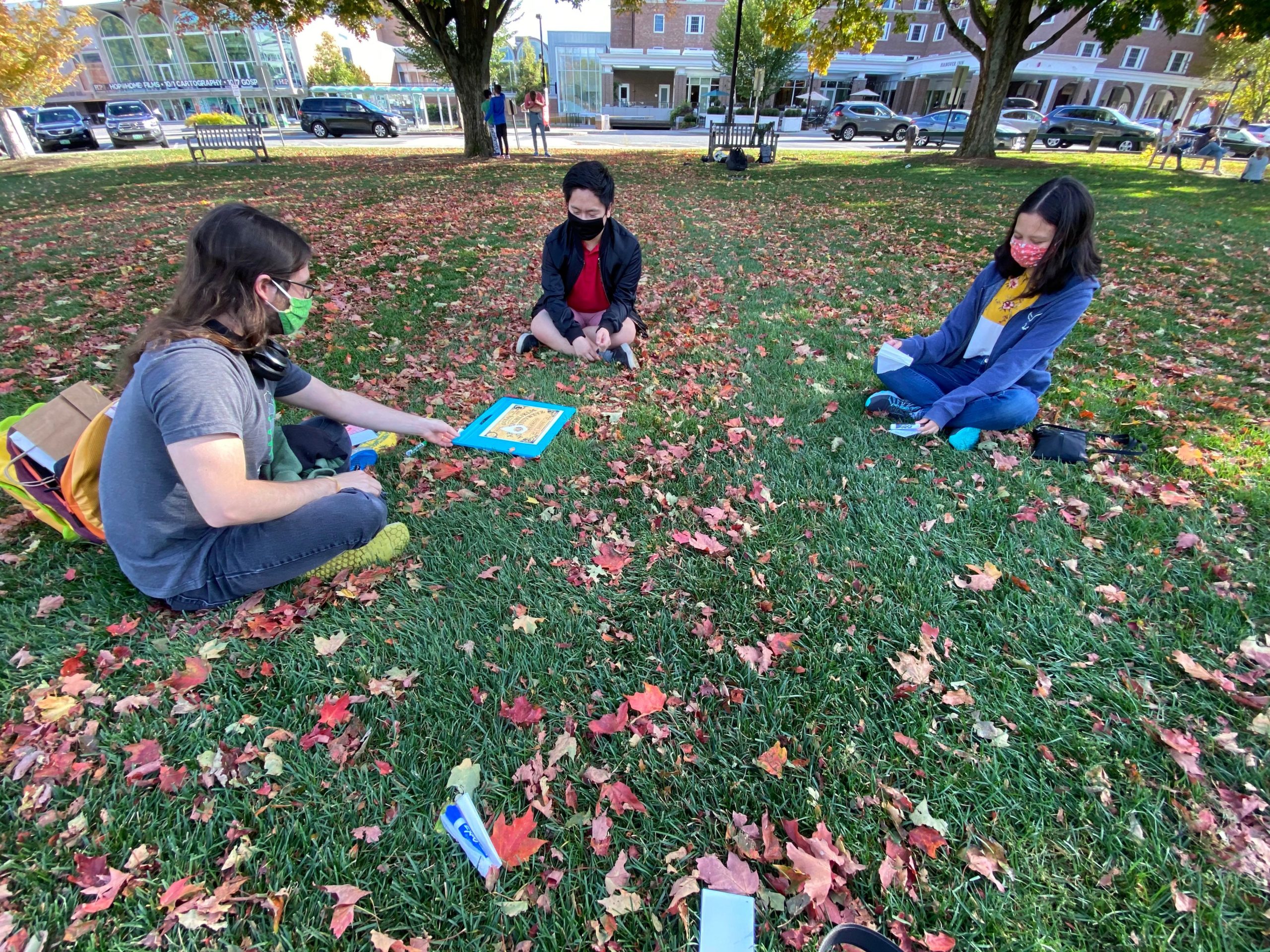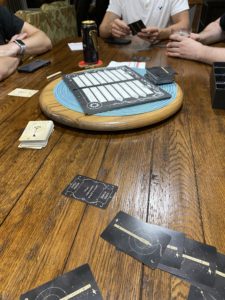
Under the Ash Tree is a series that gets at the roots of Resonym, and gives you an inside look into how we grow our games, from concept to store shelf.
For a lot of people, 2020 introduced the idea of working from home. With the global lockdowns, digital became the predominant way to communicate. In the board game world, working from home raised a lot of new challenges. How do we make games for the physical space in the digital world?
Luckily for us, Mary has some experience with working out of the office. When Mary was completing her Ph.D. she was working with people from around the world, and they only had three weeks to meet in person. She was able to collaborate remotely with her peers, and it’s a skill she was able to bring to Resonym.
The first thing we had to think about when starting the design for our latest release, Phantom Ink, was how the game would take up space. One of the biggest obstacles we had to overcome was imagining how players could interact with the game board without being able to run an in-person playtest. Online playtesting, Mary pointed out, is a miraculous thing. To be able to play with members of our community from across the world, instead of driving hours to a meetup just to hope we get time to test our game, is incredible. However, it is severely limiting in what aspects of a game can be tested.
Phantom Ink is a fairly physical game. Not in an athletic way, of course, but in an interactive way. Ghosts write out clues for their mediums letter by letter, that’s the core mechanic – so how big does the board have to be for that to work? Digital board game sites tend to show games from a first person perspective. There’s no way to account for the space players occupy when they play. With remote work, Mary said, we were forced to imagine how the interface would work and try to visualize how players would crowd around the board, how that would affect their sight lines to the game. We were able to playtest Phantom Ink in person a few times, but strictly in a safe space.
We held three-player playtests outdoors, fully masked, and with all players sitting six feet apart. This was great for proving the concepts and honing the themes for the game, but it still left us with questions about how gameplay would ultimately be executed.
With some educated guesses and years of experience developing games, the team was able to come up with the ideal layout for the Phantom Ink ouija board. It was a completely unique experience, creating a game to start to finish digitally that is designed to be played on paper. Ultimately it translated better than we could have imagined, and it’s been such a delight to bring to conventions and watch people experience it the way we envisioned.



